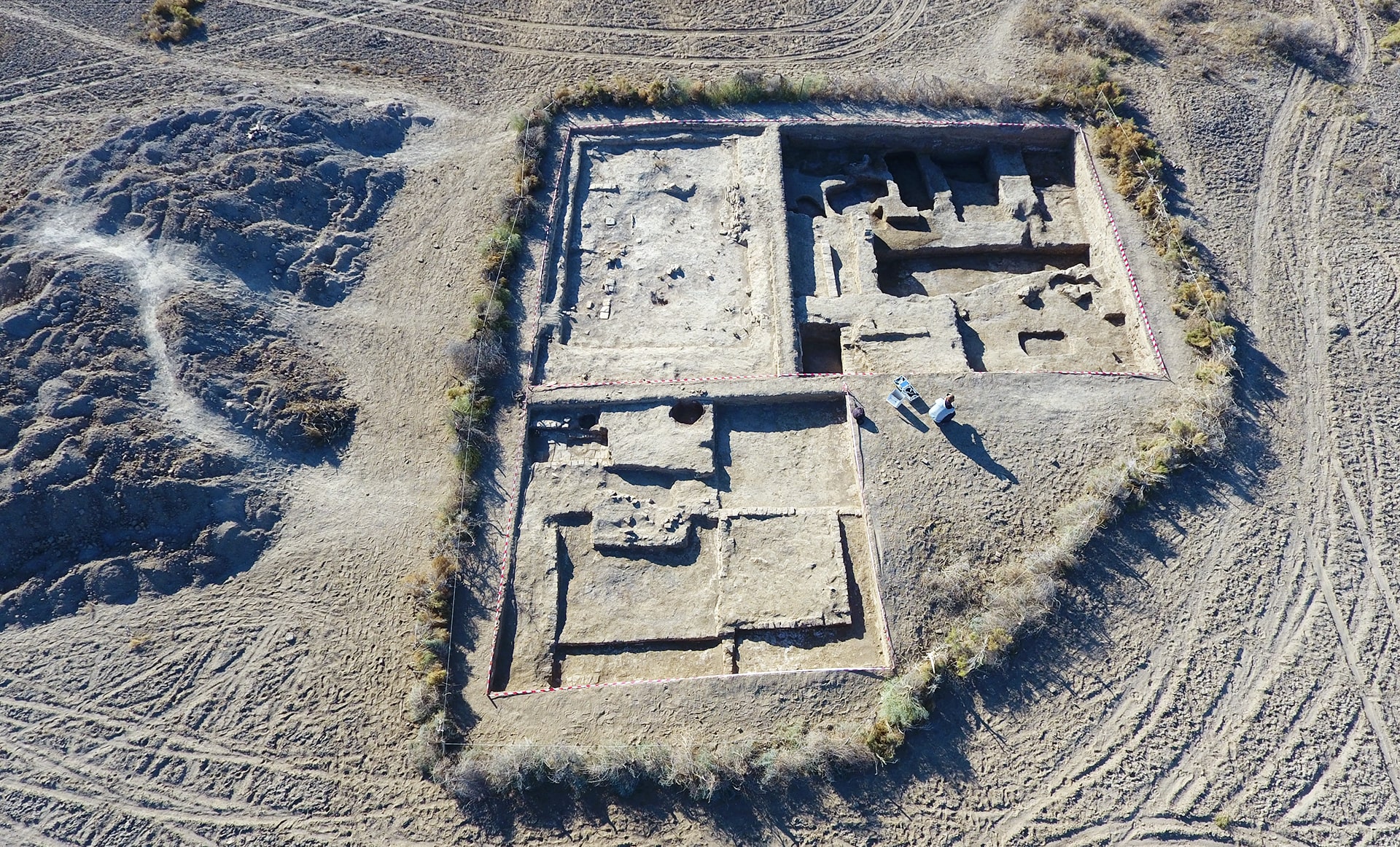TURKESTAN STARTED FROM KULTOBE HILL
The rapid transformation of the capital of the Turkic world was appreciated by the First President of Kazakhstan, Nursultan Nazarbayev, during his visit to Turkestan. The Elbasy also got acquainted with the project to create an open-air archaeological park "Kultobe Settlement", implemented with the financial support of the Eurasian Group (ERG).
In December 2018, when approving the list of anchor sites for Turkestan, the First President of the country, Nursultan Nazarbayev, noted the importance of the Kultobe settlement as a key monument in studying the processes of integration and mutual influence of the cultures of the peoples of vast Eurasia. Over the past two years, the project has been presented more than once to the Elbasy and the Head of State Kassym-Jomart Tokayev. It is also under special control of the Prime Minister of the country Askar Mamin. During the current visit, the results of two years of work and plans for the near future were presented to Nursultan Nazarbayev.
Studies conducted by Kazakh scientists prove that Turkestan, which has become the spiritual capital of the entire Turkic world, is one of the oldest cities in Central Asia.
— At the moment, there is direct evidence of the fact that the city of Turkestan began with the Kultobe hill, and the first monumental cross-shaped structure dates back to the I-II centuries — informing the Elbasy, said the General Director of the Kazakh Research Institute of Culture LLP, Doctor of Philosophy (PhD) Andrey Khazbulatov. — Gradually, the citadel, shahristan and rabad of the city were built up around this structure, which later became one of the most important political, economic and cultural centers on the Great Silk Road, and the capital of the Kazakh Khanate from the end of the XVI century to the 30s of the XVII.
During two years of scientific research carried out on the territory of 30 hectares, truly unique structures were found: a complex of altars of the X-XII centuries, a monastery of followers of the order of Yasawi — dhikr-khana of the XVII-XIX centuries and a number of other religious buildings of Sufis. In addition, archaeologists have discovered residential and craft quarters that were used from the early Middle Ages until the beginning of the twentieth century, a Friday mosque, a quarter mosque of the XVIII-XIX centuries and other historical objects. At the moment, nine anchor objects have been restored, and it is planned to complete the restoration of another 16 by the end of the year.
— In general, the studies of Kultobe allow us to present a picture of the continuous development of Turkestan at the turn of the epochs, — adds Andrey Khazbulatov. — It demonstrates the rich history of the spiritual center of the Turkic world. This is a feature of the archaeological park "Kultobe Settlement" being created. The analogs of such a park with the most ancient mudbrick architecture are the monuments of old Termez in Uzbekistan, Ani in Turkey, Pompeii in Italy, San Agustina in the USA and others. The construction of archaeological parks in the buffer zones of UNESCO World Heritage Sites is currently the most advanced practice for preserving cultural heritage.
During the excavations at the Kultobe settlement, more than 15,000 fragments of ceramics, more than 1,000 ancient coins, including coins of the mint of the city of Yasy-Turkestan, gold, silver and copper jewelry and many other interesting artifacts were found.
The three-year scientific project "Restoration of historical objects of the settlement of Kultobe" is coming to an end this year, and then everyone will be able to walk the streets of the ancient city, imagine how people lived here centuries ago, get acquainted with artifacts that show how talented and skilled local artisans were.
With the completion of archaeological surveys and restoration work on the settlement, work on the improvement of the territory will begin, the responsibility for which is assigned to local executive bodies. As part of the improvement, special domes will be installed that will cover the main historical objects and protect them from destruction. In addition, pedestrian paths will be laid on the territory of the created park, trees will be planted, landscaping will be carried out. According to the deputy akim of the Turkestan region Arman Zhetpisbayev, all the landscaping works on the territory of the archaeological park will be completed next year.






